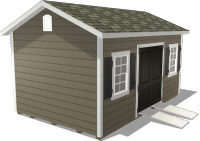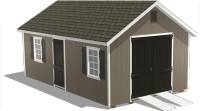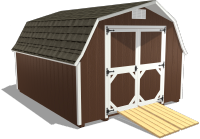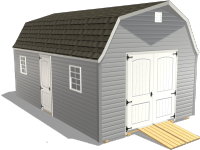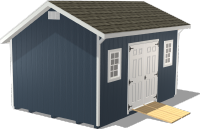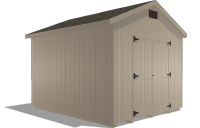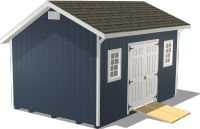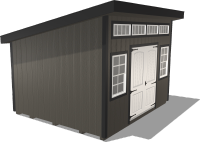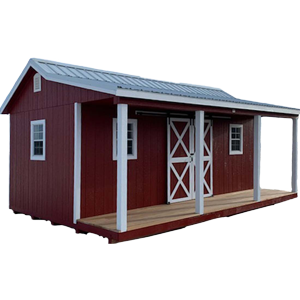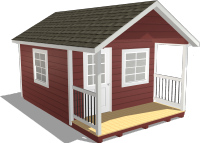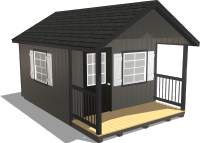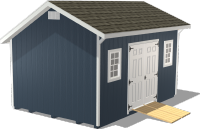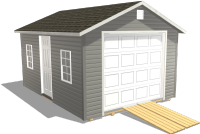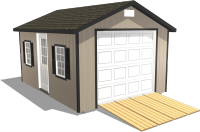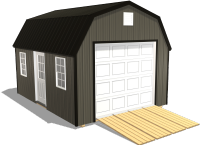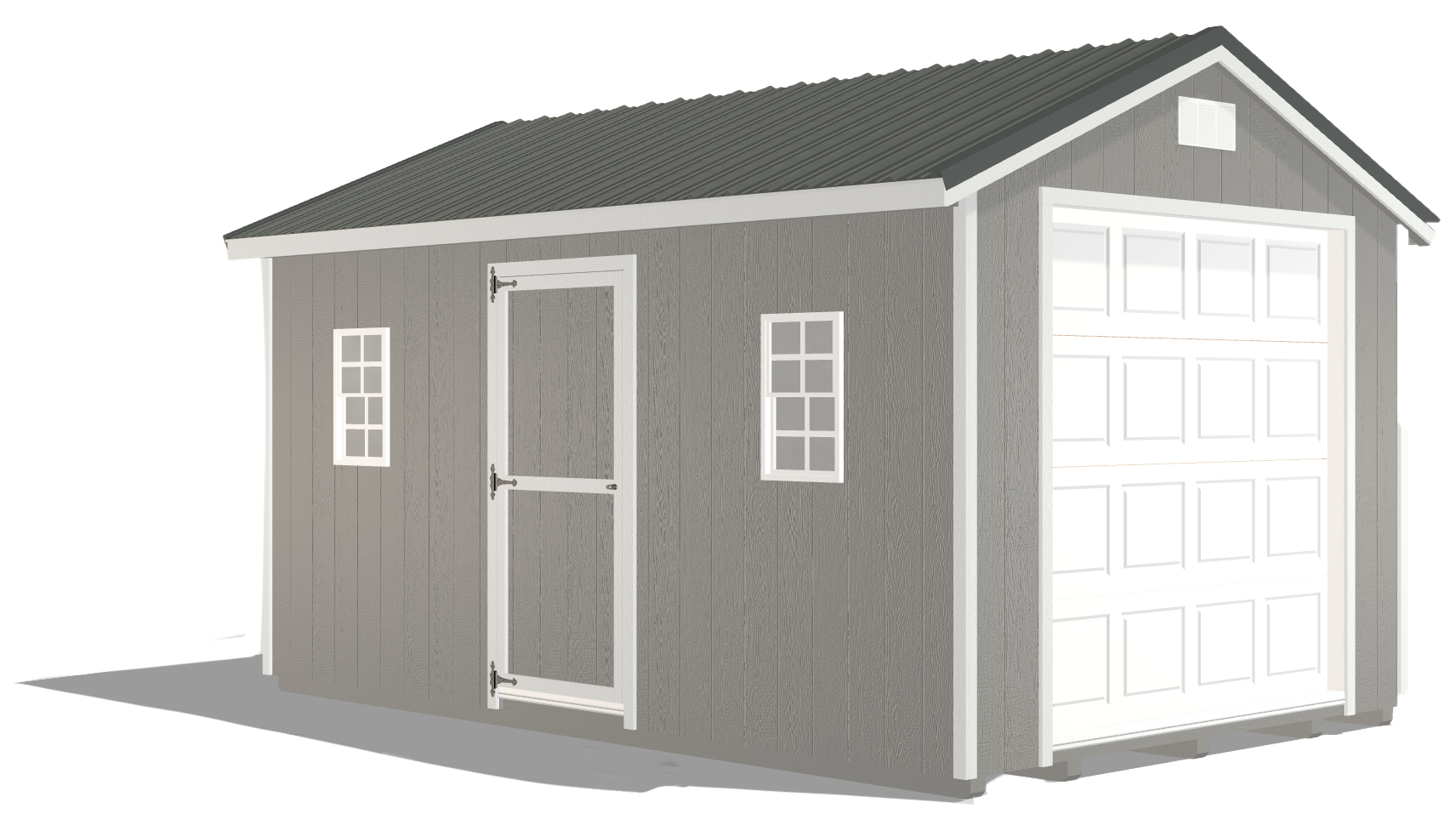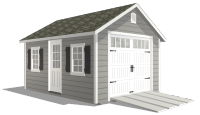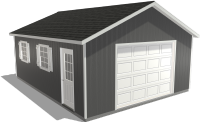Shading Success: Exploring the Top Features of Greenhouse Shade Cloths
by Dakota Storage Buildings, on August 06, 2024

Many passionate gardeners dream about cultivating a thriving garden year-round. However, this reality often has its own set of challenges, especially when it comes to controlling the indoor environment within greenhouses. As these gardeners start their greenhouse gardening journey, they may wonder, how they can effectively manage and regulate the conditions inside a greenhouse design to ensure optimal plant growth. Whether it is combating excessive heat during scorching summers or warding off frosty chills in the depths of winter, maintaining the ideal temperature, humidity, and light levels becomes essential for nurturing thriving plants year-round. Shade covers offer an effective solution to this challenge.
Understanding Greenhouse Dynamics
Maintaining optimal conditions for plant growth inside greenhouses is a complex task that requires constant attention to temperature, humidity, and light levels. These factors significantly impact plant health, and any imbalance can lead to poor growth or even plant death. Seasonal shifts add another layer of complexity, as gardeners must adapt to changing conditions throughout the year. Summer's intense heat and winter's chilling cold present unique challenges that require effective solutions to protect and nurture plants. The specific needs of different plant species can vary widely, making it even more challenging to create a stable environment that supports a diverse range of plant life. Gardeners must also consider ventilation and air circulation to prevent mold and mildew, which thrive in humid conditions. Achieving this delicate balance demands a strategic approach and understanding of these environmental factors.
Enhance Greenhouse Growth With Shade Covers
Shade covers can be an extremely valuable tool for greenhouse gardeners. Shade covers allow gardeners to manipulate light intensity and temperature levels with precision. By strategically deploying shade covers, gardeners can shield delicate plants from the harsh glare of the sun, mitigating the risk of sunburn and heat stress during scorching summer days. However, during cooler seasons, these covers can trap warmth within the greenhouse, providing a cozy haven for tender plants to thrive despite the chill outside.
There are various types of shade cloth for greenhouses available, including shade cloth and shade netting, each offering different benefits. Greenhouse shade cloth is a woven or knitted fabric that blocks a percentage of sunlight, while shade netting provides a lighter, more flexible option for reducing light intensity. Understanding the differences between these materials can help gardeners choose the best solution for their specific needs.
How to Use Shade Covers for Optimal Light Regulation

Light is crucial for plant growth and photosynthesis, but too much sunlight can be harmful. Shade covers filter sunlight to create optimal lighting conditions, ensuring plants receive the right amount of light without being overwhelmed. This is especially important for plants with specific light requirements since improper lighting can stunt growth or cause other health issues.
Strategically deploying shade covers allows gardeners to tailor light conditions to the needs of different plant species. For example, seedlings may require more shade than mature plants. By adjusting shade cover placement and density, gardeners can create the ideal environment for each stage of plant development.
Three Tips for Effectively Using Shade Covers
1. Adjust Placement Throughout the Day: Monitor the movement of the sun and adjust the shade covers to ensure plants receive consistent light exposure without being subjected to intense midday sun. Movable shade covers can be particularly useful for adapting to changing light conditions.
2. Use Multiple Layers: For plants with varying light needs, consider using multiple layers of shade covers. This allows you to cater to the specific requirements of each plant by creating zones with different light intensities within the same greenhouse.
3. Combine Shade Covers with Other Methods: Enhance the effectiveness of shade covers by combining them with other methods, such as reflective surfaces to redirect light or ventilation systems to manage heat. This approach ensures that plants receive optimal light conditions while maintaining a stable temperature.
Maintaining Ideal Greenhouse Temperatures Year-Round

Greenhouse shade cloth plays a vital role in mitigating temperature extremes inside greenhouses. During hot summers, they block excessive heat, provide shaded greenhouse spaces, and prevent the greenhouse from becoming stuffy. This protects plants from heat stress and helps maintain a more consistent internal climate, reducing the need for additional cooling measures. In cooler seasons, shade covers help trap warmth, creating a stable and comfortable climate for plant growth. By providing an insulating layer, they minimize the loss of heat, ensuring that plants remain in an environment suited for growth even when external temperatures drop.
Selecting the right shade cover density is crucial for effective temperature regulation. Dense shade covers provide more insulation, keeping the greenhouse warmer during cold months and cooler during hot months. The material and weave of the shade cover can significantly impact its insulating properties, with tighter weaves generally offering better thermal regulation. By choosing the appropriate density, gardeners can maintain consistent temperatures that promote healthy plant growth year-round. Understanding the specific needs of different plant species can help you select the right density, ensuring that each plant receives the optimal conditions for its growth stage and seasonal requirements.
Protect Your Plants With UV-Blocking
Excessive UV radiation can be harmful to plants, causing sunburn, heat stress, and other damage. Shade cloth for greenhouses protects plants by filtering out harmful UV rays. This protection is especially important for sensitive plants that are more prone to UV damage. Without adequate shielding, UV radiation can hinder photosynthesis, leading to reduced growth. Over time, prolonged exposure can also weaken plant structures, making them more susceptible to diseases and pests.
When selecting shade covers, gardeners should look for options with UV-blocking properties. These covers offer an added layer of protection, ensuring that plants remain healthy and vibrant even under intense sunlight. By incorporating UV-blocking shade covers, gardeners can safeguard their plants and promote optimal growth conditions. UV-blocking shade covers can help maintain consistent light levels within the greenhouse design, creating a more stable environment that supports the overall health of the plants.
Maximizing Plant Diversity
Shade covers help gardeners cultivate a diverse range of plant species with varying light requirements. By experimenting with different shade cover configurations, gardeners can create microenvironments tailored to the needs of specific plants. This flexibility allows the gardener to cultivate a wider variety of plants. With the ability to adjust light and temperature conditions precisely, gardeners can grow plants that would otherwise struggle in their natural climate.
From exotic flowers to rare vegetables, the ability to control light and temperature has opened new possibilities for greenhouse gardening. Gardeners can transform their greenhouses into shelters of biodiversity. By utilizing greenhouse shade cloth, gardeners can push the boundaries of what they can grow, creating lush, vibrant gardens year-round. This adaptability not only enhances the visual appeal of their gardens but also contributes to a richer gardening experience.
Best Practices for Installing and Maintaining Shade Covers
Adding shade covers to greenhouse designs requires careful planning and consideration. The durability, longevity, and ease of installation should be considered when selecting shade cover materials. Durable materials ensure that shade covers withstand the elements and provide long-term benefits.
Regular maintenance is also crucial for maximizing the effectiveness of greenhouse shade cloth. Gardeners should inspect and clean shade covers periodically to prevent wear and tear. Adjusting shade cover configurations based on seasonal changes and plant needs ensures that plants receive the optimal environment for growth throughout the year. Here are three tips for maintaining shade cloth for greenhouses:
Regular Cleaning: Dust, debris, and algae can accumulate on shade covers, reducing their effectiveness. Clean your shade covers regularly with a gentle brush and mild soap solution to maintain their light-filtering capabilities and prolong their lifespan.
Inspect for Damage: Periodically check your greenhouse shade cloth for any signs of wear and tear, such as tears, fraying, or sagging. Addressing these issues promptly will prevent further damage and ensure that the covers continue to provide adequate protection and shading.
Seasonal Adjustments: As the seasons change, so do the light and temperature requirements of your plants. Adjust the placement and density of your shade covers accordingly to provide optimal growing conditions throughout the year. This may involve removing or adding layers, repositioning covers, or changing the angle of coverage.
Create the Ideal Greenhouse Environment for Your Plants

Shade covers are indispensable tools for achieving year-round greenhouse gardening success. They provide essential control over light intensity, temperature, and UV radiation, creating the ideal conditions and shaded greenhouse spaces for plant growth. By investing in quality shade covers, gardeners can overcome the challenges of seasonal fluctuations and cultivate thriving gardens regardless of the weather.
For gardeners looking to enhance their greenhouse gardening practices, customizing your greenhouse design to meet your specific needs is a crucial step. Consider customizing your greenhouse with our 3D Configurator tool to ensure it meets all of your needs. Visit Dakota Storage Buildings' website or local locations to discover a range of greenhouse options and take the next step toward a more productive and enjoyable gardening experience.



